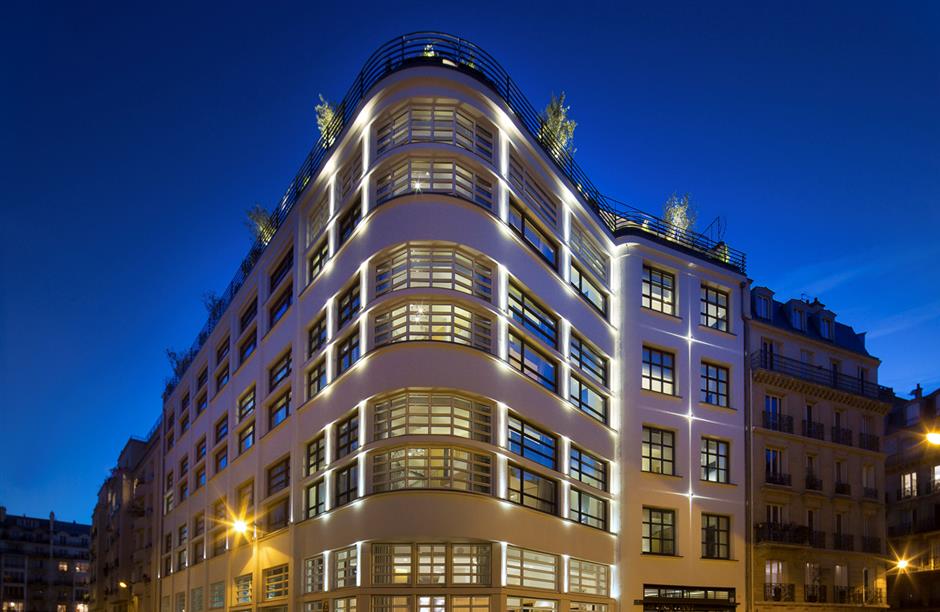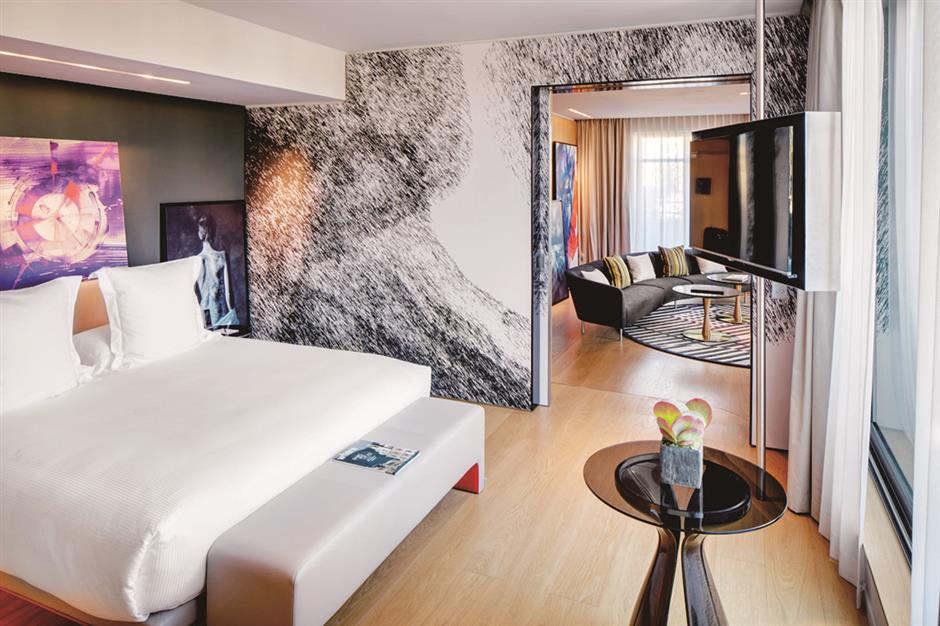From analogue telephone era to a digital-age hotel
Le Cinq Codet is an ultra-chic modern hotel that one doesn’t expect amidst Paris’ old-world atmosphere. The lighted façade with pure lines contrasts the majesty of Les Invalides, Hardouin-Mansarts Chapel dome nearby.
The 1930s’ construction used to be a telecom exchange center before it was converted into a hotel.
It is a great example of early 20th century industrial architecture, in a white cruise ship style and large white and dark grey windows that have been renovated as the same.
When designer Jean-Philippe Nuel visited the site for the first time, he told himself that it would be fantastic to create apartments in the building.
“I have been particularly seduced by the high ceiling heights that offer the chance to get out of the traditional hotel architecture scheme by creating duplex rooms,” he said.
The 1930s’ spirit of the building and its industrial features have been the inspiration for the overall design of the hotel, according to Nuel.
“Concerning the surroundings, it is its domestic and elegant atmosphere that I have enhanced but also the proximity of the museums, such as Rodin’s museum, and the former Yves-Saint-Laurent’s apartment. Consequently those surroundings brought me to create an elegant hotel with both loft and art collector spirit. There were many such lofts in the 1930s,” Nuel said.
The different inspirational sources are expressed through several features in the project. The 1930s’ spirit appears in the rooms’ arrangement with a cabin inspired mill work and the round window in the staircase of duplex roxoms; the loft flavor is found in the lobby where guests can sit in a home living room.

The lighted façade with pure lines contrasts the majesty of Les Invalides, Hardouin-Mansarts Chapel dome nearby.
“In my work, there is never a literal reconstitution but a unique design directly inspired by multiple touches that create the common thread of the project,” Nuel said.
“The design highlight of the hotel is the chance to break up the rule of traditional hotel architecture for areas such as rooms, corridors and lobby.
“Finally, it was the chance to create a hotel that does not look like a hotel.”
Wood and especially oak were the main materials used for the interior. It offers a warmer atmosphere to the contemporary style of the hotel.
A close attention to comfort and functionality gives the rooms a warming atmosphere. It also reveals the essence of a Parisian apartment which is usually small.
“The guest can feel like in his or her own Parisian apartment, with many pieces of art and with the possibility to invite friends even in a small room,” Nuel said.
“I believe the people who travel want new experiences, where they have the chance to live a place from the inside, as they were inhabitant of the city, not only a tourist.”

A guest can feel like in his or her own Parisian apartment, with many pieces of art and with the possibility to invite friends even in a small room.
Owing to its warm colors, wood materials, opulent looking leather and well-curated artworks, Nuel took advantage of different layouts to design 67 rooms and suites with exceptional volume and personality.
Nuel said he likes to renovate heritage buildings in a contemporary style.
He also likes to create a dialogue between styles and work on projects that touch us because we live in the modernity of our times. He says we can experience it without denying our cultural roots.
Nuel believes the best feature of the hotel is its versatility and their functions.
“I like to imagine hotels as a journey where you pass from an area to another with some highlight,” he said.
Nuel worked with three photographers he appreciated concerning the chosen art pieces. They made special shootings for the hotel.
Designer furniture such as Fritz Hansen, Paola Lenti, Ligne Roset and Elisabeth Garouste are used throughout the space.
Le Cinq Codet is a member of Design Hotels.
















